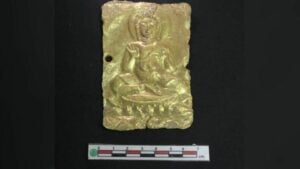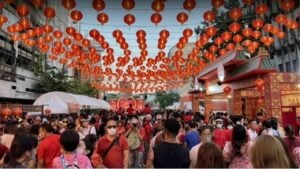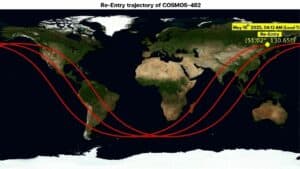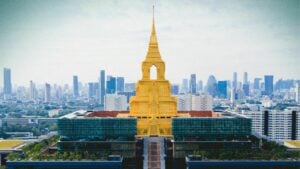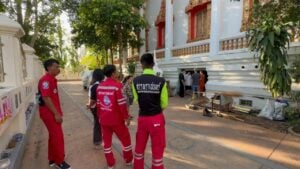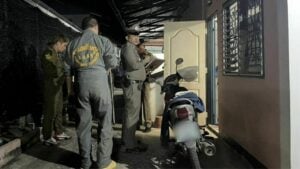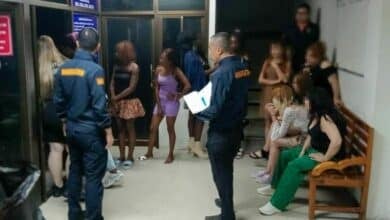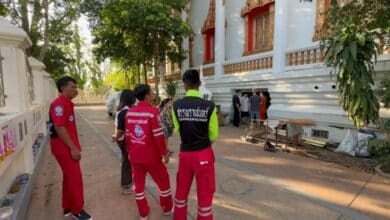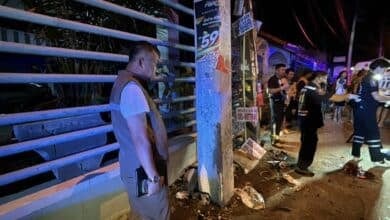Travel Guide: A brief history of the sex industry in Thailand
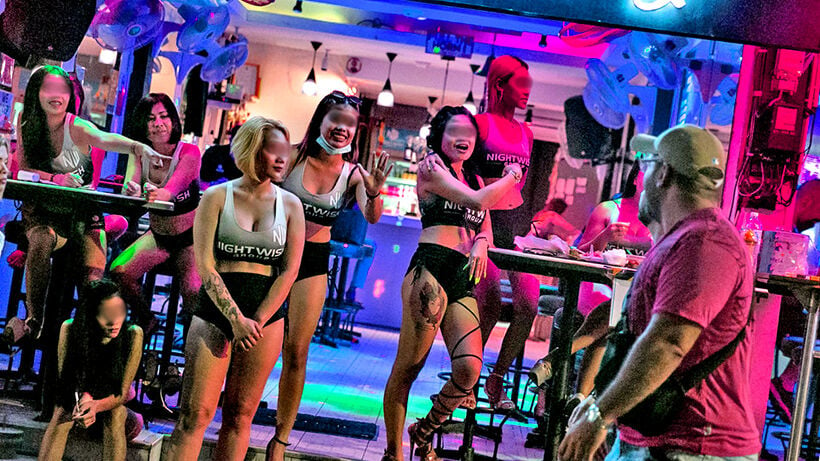
Thailand is known for many things, but there is one thing that is either commonly joked about or remains hush hush locally.
It’s the country’s sex workers and red light districts. There is a fair share of travellers who visit Thailand specifically because they want to experience this ‘vibrant’ side of Thai life. But how did it all start?
This is where we take you on a journey and tell you a tale of the Thai sex industry…
When waves of US soldiers began arriving on Thailand’s beaches during R&R breaks in the Vietnam War in the ’60s and early ’70s, many poor and underprivileged women who needed to provide for their families saw the economic potential. Many rural residents struggled as a result of a lack of work and low incomes, and as Thailand’s population rose in the cities, their financial options declined.
As American soldiers began to crowd Thailand’s streets and pubs in quest of companionship and physical intimacy, countless impoverished women were forced to choose between searching for low-paying professions or engaging in sex work.
Some women opted for the latter option. Several were even forced into prostitution by their families, so they could send money back home and improve their family’s finances and status. After many women in Thailand’s small towns and urban areas in the 1960s made the choice, sex tourism began to flourish in Thailand, Southeast Asia’s fastest growing economy.
Shortly after the Vietnam War, the sex industry and the consequences of sex tourism took a dark turn. There was a rapid surge in sex trafficking. Many criminal gangs began to explore ways to profit from the demand for sex. It wasn’t long before there was numerous cases of kidnapping teenage girls from the rural parts of Thailand.
It began mostly in northeastern Thailand, the poorest area, where traffickers promised young women genuine jobs, only to fool them later when they became indentured.
Then another huge problem appeared, adding to the already tenuous legalities and cultural impact of the industry. In the late 1980 and early 1990s, HIV and AIDS exploded in Thailand. Thailand had to find a solution and there were a lot of campaigns to try and educate the population about the dangers and avoidance.
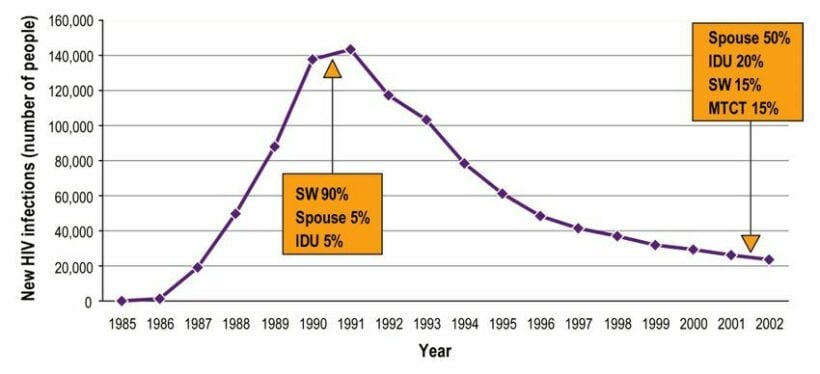 The use of condoms was heavily promoted and encouraged through public awareness campaigns. It seemed like an uphill battle, but the programs were largely effective. The chances of becoming infected with HIV has now drastically reduced (although it remains an issue in segments of Thailand’s youth).
The use of condoms was heavily promoted and encouraged through public awareness campaigns. It seemed like an uphill battle, but the programs were largely effective. The chances of becoming infected with HIV has now drastically reduced (although it remains an issue in segments of Thailand’s youth).
According to UNAIDS, new HIV infections peaked in the early ’90s. People living with the disease peaked at the turn of the century with an estimated 800,000 infections and the number of deaths following suit a few years later with an estimated 57,000 deaths a year in the early aughts.
Both stats have since been on a downward trend as treatment availability has increased. In 2020, only about half a million people were estimated to be living with HIV in Thailand, with an estimated 12,000 HIV-related deaths nationwide.
With the success of the campaigns, the battle against HIV and AIDS was beginning to have positive results. But organised sex trafficking remained a problem.
The Thai government’s HIV/AIDS Prevention and Control Program encourages all sex interactions to wear condoms. Condom use in sex institutions has increased from 14% of sex acts in 1989 to 94% in 1994, resulting in a decrease in the rate of all sexually transmitted infections, not only HIV.
Once the government launched its AIDS education program in 1990, prostitution levels also started to drop, mostly due to the fear of contracting AIDS, while fewer men were less likely to take advantage of them for the same reason.
NGOs began their fight against the issue by advocating for new laws that would not only ban human trafficking and prostitution but also actively strive to track down and prosecute criminals.
There were over 80,000 female prostitutes working in 6,095 commercial sex venues in Thailand in 1989, with an average fee of US$10.60 per ‘session’. However, 5 years later in 1994, there was a drop of 16,000 (from 80,000 to 66,000) women working in the field. The price for their services had climbed to US$16.30 per hour in related venues such as massage parlours and restaurants.
The move to gentleman’s clubs, massage parlours, bars and even restaurants during the late 1990s and early 2000s represents a gentrification and normalisation of Thailand’s sex industry. The hubs for the industry also became more defined and started to become semi-respectable international drawcards for the world’s sex tourists.
Places like Pattaya (of course), Patong, Nana Plaza and Soi Cowboy in Bangkok, and Bangla Road in Phuket are now well known for their entertainment ‘options’.
There are also equally vibrant ‘sois’ (streets) for the gay community, usually located near the hot zones for bars and nightlife.
Prostitution is illegal in Thailand, though the consequences are minor and the legislation has plenty of grey areas exploited by operators. Under Section 5 of the 1996 Prevention and Suppression of Prostitution Act, a person who advertises herself or himself for sex could face a fine of 1,000 baht.
Pimps and gang members are also highlighted in the Act. They could face a fine of 20,200 baht and up to 10 years in prison for prostituting women, according to the law.
The act also addresses the seriousness of child trafficking crimes. It stressed that anyone found guilty of having sex with minors will face much higher penalties and longer prison sentences. Jail terms range from 5 years to 20 years, with fines from 100,000 to 400,000 baht.
These provisions don’t include rape, physical violence or any other serious offences. If anyone is found guilty of those crimes, punishment can be far worse including longer prison terms.
Once seen as a south east Asian haven for pedophiles and traffickers, Thailand now has really cleaned up its act with a long list of prosecutions over recent decades, and harsh penalties for those caught.
Thailand changed its tactics in its fight against sex trafficking in 2008. The definition of human trafficking was expanded by the Anti-Trafficking in Persons Act to also include trafficking for the purposes of labour exploitation and trafficking of male victims.
It’s all a big step into the right direction. Organisations had been working for a long time to have both genders included in the definition of trafficking, as it wasn’t just women being trafficked and abused.
Bottomline, the sex industry has brought in a lot of money for Thailand, especially among those who lack better employment options. And many tourists travel a long way just to experience the country’s red light delights. So although officials know that much of the ‘transactions’ are illegal, there is no doubt they’ll continue turning a blind eye to the situation.
Thailand’s reputation for one of the most exciting red light travel options in the world remains secure.
SOURCES: UNAIDS | Lift International | Pub Med
Latest Thailand News
Follow The Thaiger on Google News:










